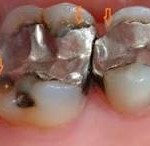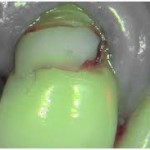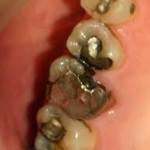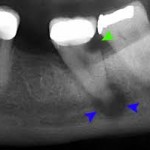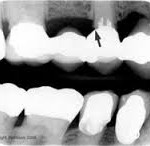Most large fillings break down with time. Very often, the margins where filling materials meet the natural tooth structure break down the most, thus creating a pathway for bacteria to enter the restoration. Silver filling materials don’t form a chemical bond with the tooth structure but rely on the packability and mallability of metal alloys when being restored. Composite fillings (white fillings) do form chemical bonds with tooth structure, but are susceptible to vigorous attack from biting force and chemicals in saliva.
A common misconception is that a tooth which is covered by a crown (cap) is no longer susceptible to decay. This is not true. All teeth with crowns have a band of exposed tooth structure between the edge of the crown and the point where the gum attaches to the tooth. This is even true for crowns which extend below the gum line. This area of exposed tooth remains susceptible to decay.
The most common reason for crown failure happens to be recurrent decay at an edge where the crown meets the tooth. The green arrow on the X-ray is pointing to a dark shadow on the side of the tooth just under the crown. This dark shadow is decay. The X-ray does not show how far the decay has progressed up under the crown. This is because the metal in the crown blocks the X-rays. When decay has progressed to the point that the crown comes loose, efforts to save the tooth may require a root canal, post and new crown.
It is important that the recurrent caries underneath the crowns and bridges or other forms of restoration be found early so that timely treatments can be applied. Patients who underwent endodontic treatments (root canal treatments) on teeth before having them restored with crowns/bridges/fillings often don’t experience pain when recurrent caries takes place. In that situation, recurrent caries can go unchecked until cavities get so large that replacement might not be possible due to extensive loss of tooth structure.
You can prevent decay with a good daily hygiene regimen which includes brushing, flossing, and maintaining a good diet low in sweets and soft drinks. Regular dental check-ups are important to dental health as well.
